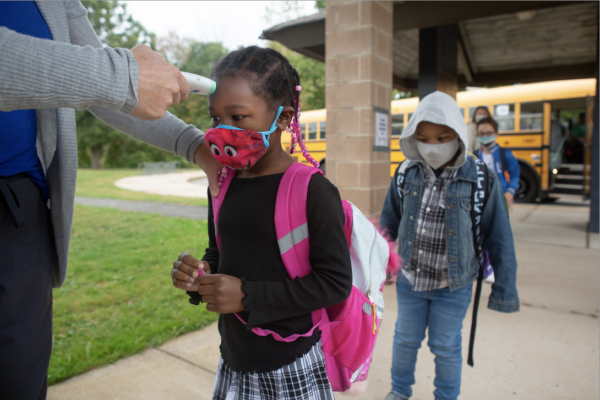Public school spending increased during fiscal year 2020 even as the coronavirus pandemic kept many schools closed, according to an early look at federal education data. The new data analysis, released Tuesday by the U.S. Census Bureau, builds on information that 35 states and the District of Columbia submitted to the U.S. Education Department’s National Center for Education Statistics.
Overall, the analysis shows that local and state spending rose in all but five of the states sharing data, with instructional costs and teachers’ salaries accounting for the largest increases. Not surprisingly, costs were down in student transportation and food service.
Federal funding for public schools dropped slightly, despite at least $13 billion provided for elementary and secondary schools in the CARES Act, which was approved by Congress in March 2020. States and districts have until September 2022 to obligate the CARES Act money. The analysis does not include any of the spending from the larger Covid relief packages approved in December 2020 and March 2021.
The data released Tuesday came from a standard form, known as the National Public Education Financial Survey or NPEFS, that states submit to the Education Department annually. States typically provide information on average daily attendance, school district revenue, and types of expenditures. For the 2020 version, the department asked for a breakdown of spending dollars from the CARES Act’s Elementary and Secondary School Emergency Relief (ESSER) fund and a pot of money distributed by governors.
The preliminary breakdown does not include specific details about spending Covid relief aid. But state plans submitted to the Education Department over the summer provide some examples of how the CARES Act money has been spent. Tennessee, for instance devoted $50 million in the governor’s discretionary funds for a grant program that allows districts to pay for laptops, tables, and wi-fi devices needed in distance learning. New Hampshire spent $6 million to create a new state-level learning management system. The District of Columbia put $1.5 million toward expanding behavioral health services. Louisiana and Indiana invested money in tutoring.
[Read More: With an Influx of Covid Relief Funds, States Spend on Schools]
The Education Department is working to expand the reporting requirements for the 2021 submissions to include spending from the Coronavirus Response and Relief Supplemental Appropriations Act, which provided $54.3 billion in ESSER funds, and the American Rescue Plan, which had $122 billion for ESSER. The department is seeking comments on its expanded requirements through Friday, Oct. 8.

